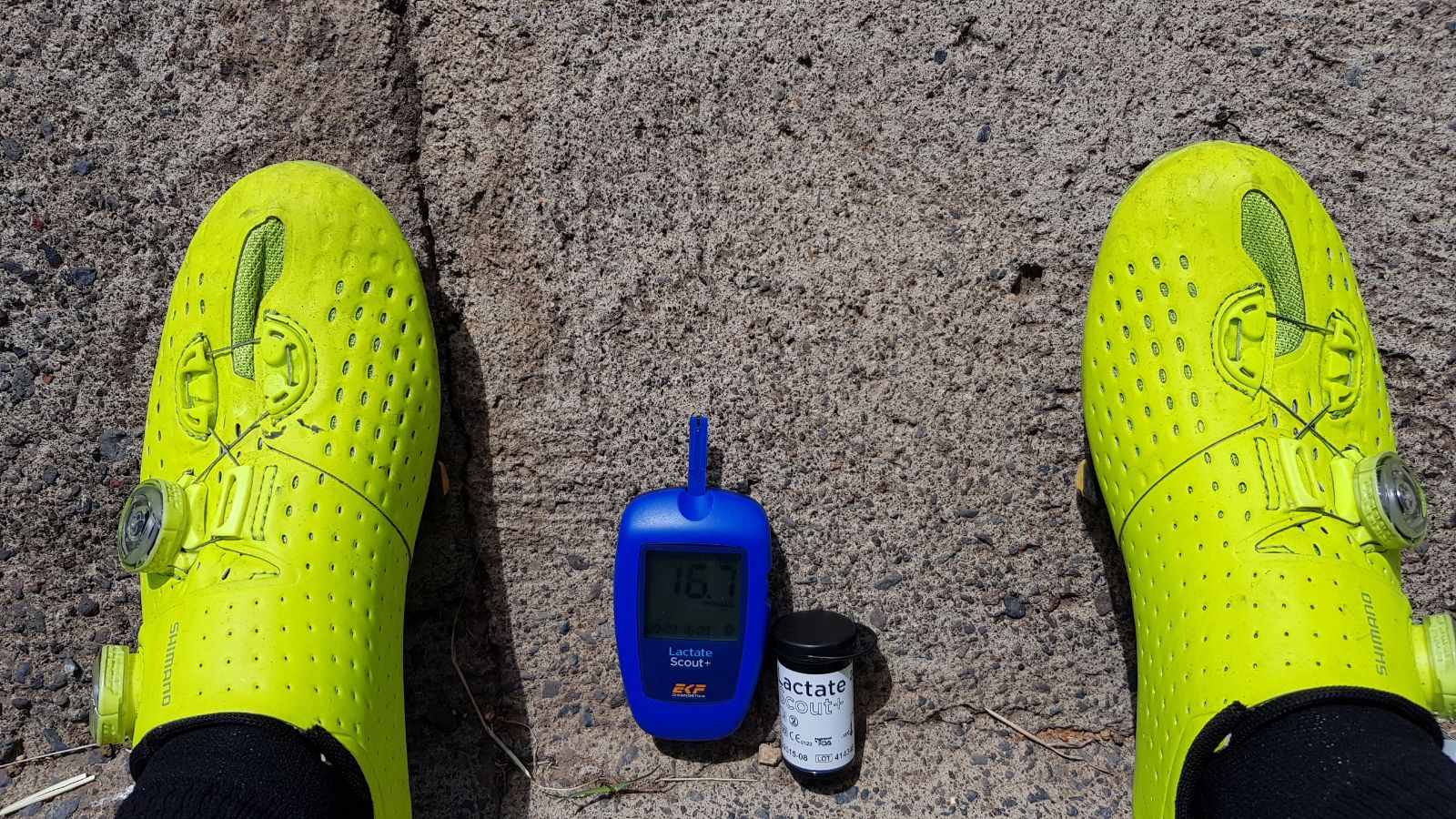Studies have shown time and time again that short high-intensity interval training [HIIT] is one of the most efficient tools at your disposal for building endurance fitness, helping you to bike/run/swim faster for longer before fatigue sets in.
Z4 HIIT training (<6mmol/l) on lactate/HR to improve FTP
Ideally you should bring the lactate level for a maximum of 30 seconds to your Lactate Threshold [LTH] of 6mmol/l [Z4] and start the next interval when you have "de-lactated" below 2mmol/l [Z2]. You can do 2 or 3 sets of 10 reps.
If you don't have the ability to analyze blood lactate, use your Heartrate as measured in your Lactate Test. Z4 training above the lacate threshold does not bring benefits but does cause extra "verzuring" affecting your further training capacity. In the worst case scenario, if you cannot analyze lactate and do not know your LTH, you can combine your Z4 training with fixed length lactate clearance training described below.
Z6 Lactate clearance training (>6mmol/l) on Power
40/20 workouts are intervals designed around 40-seconds of work followed by 20-seconds of rest or active recovery. They fall under the umbrella of Tabata workouts (named after Dr. Izumi Tabata) and are often referred to as HIIT (high intensity interval training). Over the years, many different work-to-rest ratios have been used for certain workouts, such as 20-seconds of work/10-seconds of rest, 30-seconds of work/30seconds of rest, 40-seconds of work/20-seconds of rest, etc. All of these work on similar principals.
During the intense 40-seconds of work, you will be close to or at your lactate threshold, i.e. the point at which your muscles begin producing lactate as a byproduct of anaerobic respiration. When you produce lactate at a faster rate than it can be utilized, it’s pretty much game over for your performance. Your muscles’ ability to contract becomes significantly diminished and you will be forced to slow to a crawl, or even stop all together, until lactate can be cleared.
Therefore, we want to teach your body to utilize and clear lactate as quickly as possible, which is why you’ll want to take short rests after each interval. During the 20-seconds of active recovery/rest, your heart rate will drop, which clears the lactate and allows you to make another effort. Over time, your body will become efficient at clearing lactate, and you will be able to hold a faster pace for a longer period of time.
As you can imagine, 40/20 workouts can become quite intense. So, these workouts are recommended for well-trained athletes with a solid foundation of fitness and strength. Let’s take a look at some 40/20 workouts that will train your body to become more efficient, faster and stronger.
Cycling
This workout is ideal for the stationary trainer. Again, be sure you are rested and well-fueled with carbohydrates, such as an energy bar (plus 20-30oz water), prior to starting this workout.
Let’s say your goal is to hold 300 Watts for a 20k Time Trial. Begin with a 30-minute gradual warm up. Then ride 40-seconds (90+ rpm) at your TT goal (300W) followed by 20-seconds at 200W. Continue this 40/20 pattern for 10 minutes. And over time, gradually increase the 40/20 to 30-minutes. Following the workout, pedal easy for 10-minutes to warm down.
Once you have mastered the above workout, let’s move into phase 2. Begin with a 30-minute gradual warm up. Then ride 40-seconds (90+ rpm) at 10W more than your TT goal (310W) followed by 20-seconds at 210W. Continue this 40/20 pattern for 10 minutes. Over time, gradually increase the 40/20 to 30-minutes. Following the workout, pedal easy for 10-minutes to warm down.
NOTE: When your total workout time reaches 50+ minutes, be sure to fuel your body during the ride with 1 bottle containing 150-250 calories of fluid replacement drink. Workouts like this can be performed once every 10-14 days.
https://www.trainingpeaks.com/blog/work-to-rest-ratio-the-benefits-of-40-20-workouts/
https://www.annemiekvanvleuten.nl/nieuws/in-gesprek-met-mezelf-tijdens-de-high-intensity-training/
https://www.ncbi.nlm.nih.gov/pmc/articles/PMC5539186/
https://www.sportsperformancebulletin.com/endurance-training/high-intensity-training/interval-training-go-long-short/
Stability of the blood lactate-heart rate relationship in competitive athletes
https://pubmed.ncbi.nlm.nih.gov/10211855/
Why a Higher VO2 Max Isn’t Always Better
Improving your max aerobic power may come at the cost of worse efficiency, a new study finds
Earlier this year, scientists in Norway published a case report about a cyclist named Oskar Svendsen who, as an 18-year-old, recorded the highest ever value in a VO2 max test, won the world junior championships a few weeks later—but then, after a short and underwhelming stab at a pro career, retired before his 21st birthday.
He had a Ferrari engine, but it guzzled fuel wastefully. And that, they argue, was no coincidence.
https://www.outsideonline.com/health/training-performance/why-higher-vo2max-isnt-always-better/
